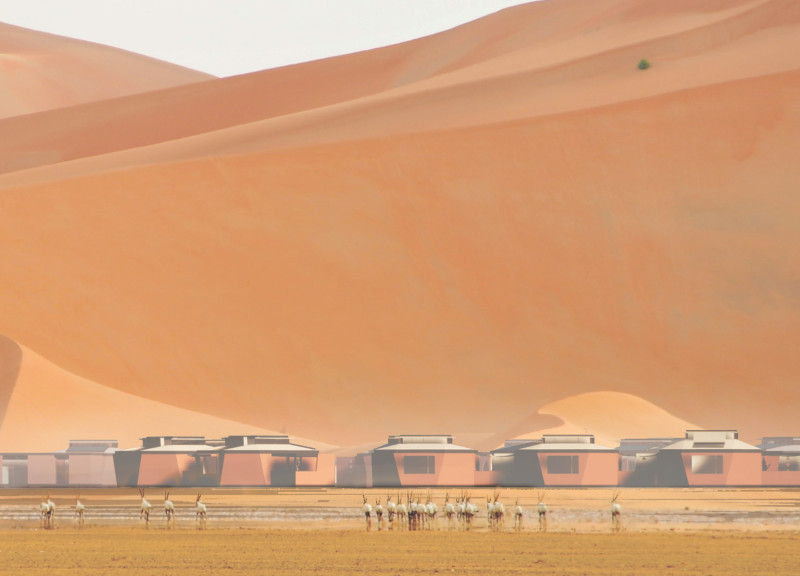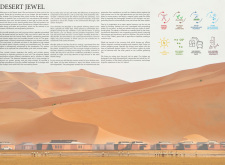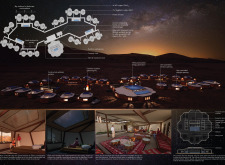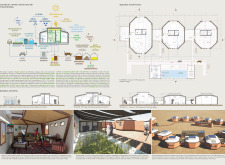5 key facts about this project
The Desert Jewel architectural project exemplifies a modern approach to sustainable design in the challenging climate of the Arabian Oryx Protected Area. This project focuses on providing a comfortable lodging experience while emphasizing environmental stewardship and architectural integration with the surrounding desert landscape. Each lodge is designed to offer privacy while maximizing views of the natural beauty, embodying a respectful coexistence between built and unbuilt environments.
The primary function of the Desert Jewel is to serve as a retreat, offering visitors the opportunity to immerse themselves in the unique ecology of the desert. The design incorporates various spaces, including private lodges, communal areas for dining and social interaction, and outdoor environments that engage with the local ecosystem. The arrangement of these spaces fosters a sense of community among guests while allowing for individual retreat into the naturally designed lodges.
Innovative environmental strategies underpin this project, setting it apart from other architectural endeavors in similar contexts. The use of cross-laminated timber for structural elements offers not only strength but also improved thermal insulation, crucial for desert conditions. Solar energy is harnessed through photovoltaic panels, ensuring all energy needs are met sustainably. This reliance on renewable energy aligns with contemporary architectural ideas focused on ecological resilience.
Water conservation techniques further distinguish the Desert Jewel. Incorporating greywater recycling systems allows for efficient water use, while constructed wetlands serve to filter and reuse water, enhancing local biodiversity. Unique cooling strategies, such as natural ventilation and adjustable pantograph shutters, mitigate extreme heat and provide guests with control over their comfort levels.
The overall architectural design actively responds to the desert’s climate and landscape, employing a passive design philosophy to optimize the use of natural resources. The organic forms and non-linear layout reduce the visual impact on the environment and create a connection between the built structures and the surrounding scenery.
For a deeper understanding of the architectural plans, sections, and design ideas that inform this project, readers are encouraged to explore the detailed presentation of the Desert Jewel. This exploration will provide further insights into the innovative approaches and technical considerations that define this unique architectural endeavor.






















































